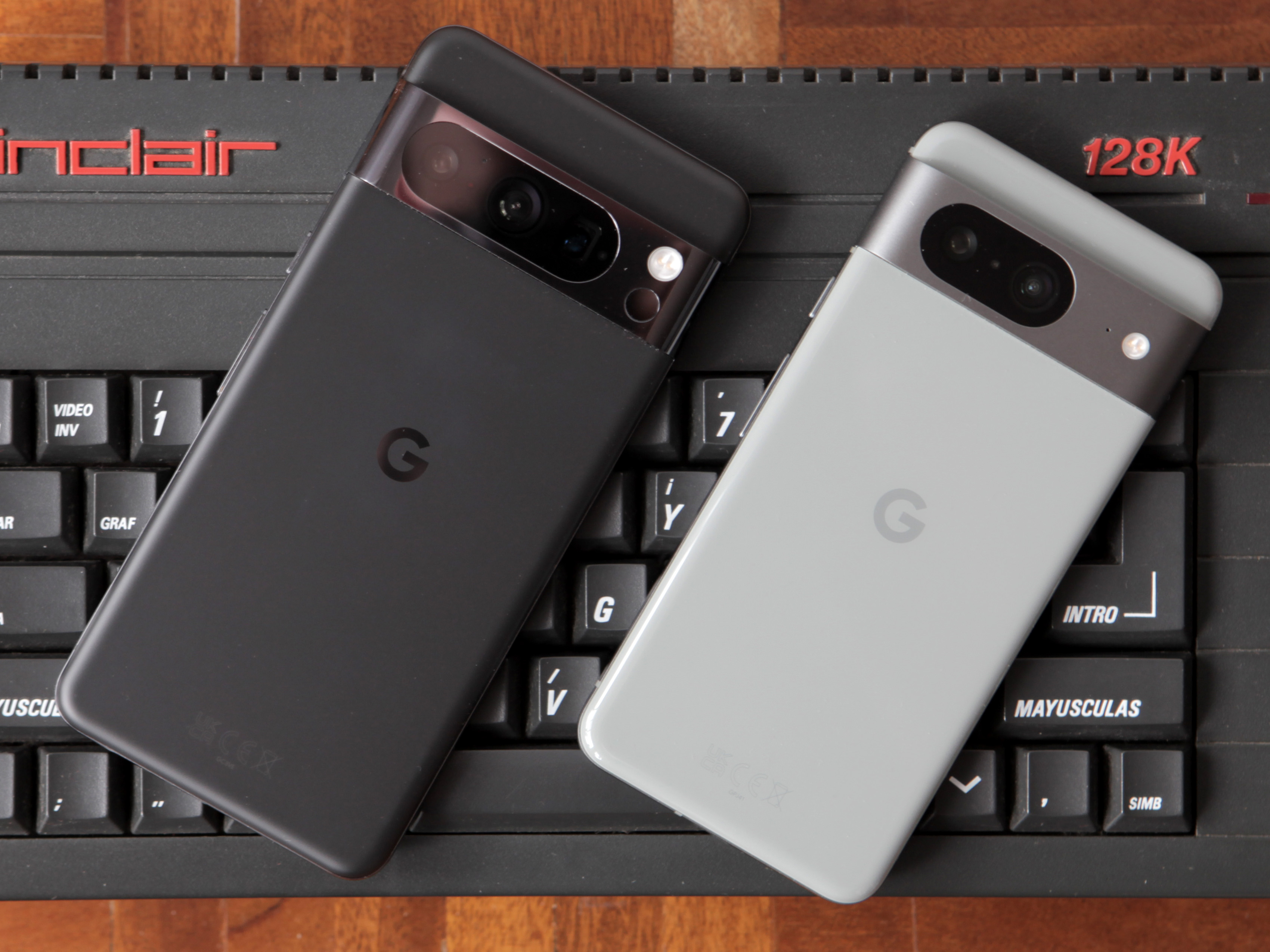The Pixel 8 Pro was known for its exceptional photo abilities and for setting a benchmark in Android updates, and Google wants to one-up that with the Pixel 9 Pro and XL. The latest Google Pixel looks good with a new design, more color options, and upgraded specifications, but is it worth justifying upgrading from a Pixel 8 Pro? You may already know the answer, but stick to the end to find out. Here’s our Pixel 9 Pro vs Pixel 8 Pro comparison.
Build and Design
The Pixel 9 Pro has dimensions of 152.8 x 71.9 x 8.5 mm whereas the 8 Pro is 162.6 x 76.5 x 8.8mm. The difference in size is pretty significant, and the Pixel 9 Pro is much more pocketable. The 8 Pro is more comparable to what technically is its true successor, the Pixel 9 Pro XL.
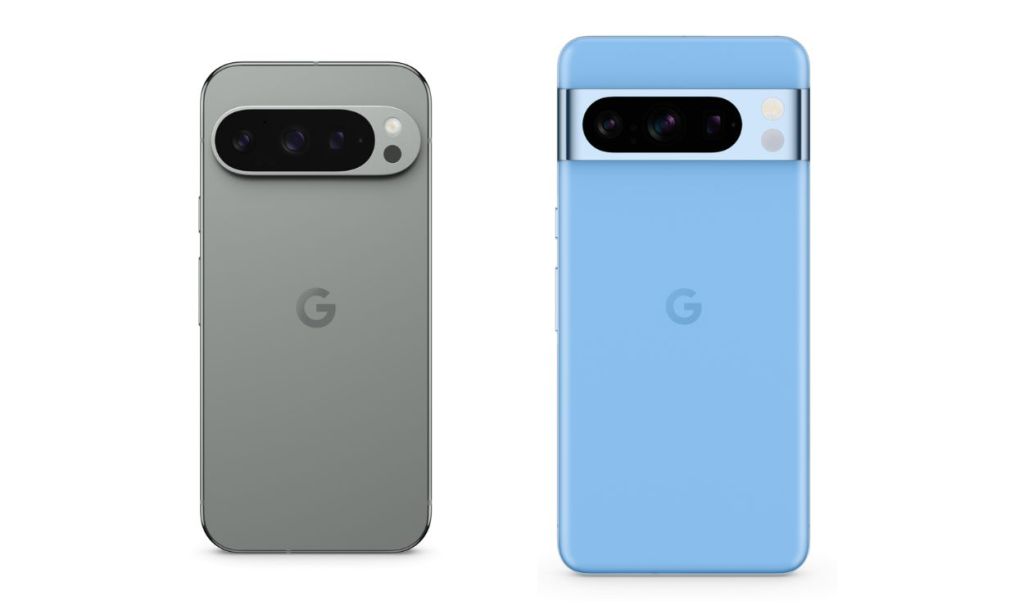
Both devices boast an Aluminum chassis with matte back glass and glossy frames. Another difference is that where the latest Pixel uses Corning Gorilla Glass Victus 2 at the front and back, the Pixel 8 Pro uses the last-gen Gorilla Glass Victus.
When it comes to the design, there are stark differences. One of the first things you notice right away is the slightly more curvy screen edges and overall language, and the boxy nature of the Pixel 9 Pro compared to the 8 Pro. This could be a pro or a con depending on how you look at it. In my opinion, the Pixel 8 Pro design felt much more Pixel-like, while the 9 Pro clearly takes some inspiration from iPhones.
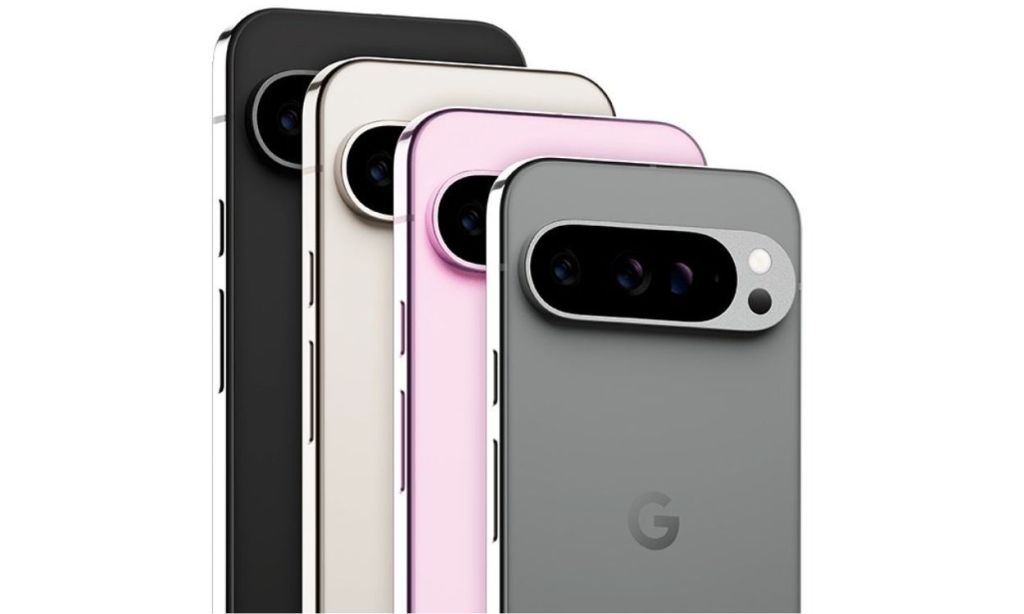
Another major difference is at the back of the camera module. The Pixel 8 Pro’s camera bar extends all the way to the sides, whereas the one on the Pixel 9 Pro is an island. Again, the Pixel 8 Pro’s back design felt much more original since it’s what made the Pixels so unique starting with the Pixel 6, but the Pixel 9 Pro’s camera design doesn’t feel out of place either.
Pixel 9 Pro vs 8 Pro: Display
The display of the Pixel 9 Pro is a 6.34-inch 1.5K 120Hz LTPO OLED (Super Actua) with 1280 x 2856 pixels resolution and a supposed HDR peak brightness of 2,050 nits and 3000 nits under direct sunlight.

The Pixel 8 Pro on the other hand features a bigger 6.7-inch 120Hz LTPO OLED with 1344 x 2992 pixels of resolution and a peak brightness of 2,400 nits. The Pixel 9 Pro boasts Samsung’s latest M14 panel, which is supposedly more vibrant.
Brightness isn’t exactly a feature of utmost importance to many people and probably to you, and besides the Pixel 9 Pro’s brighter Super Actua panel, there isn’t much of a difference between the two that would convince people to choose one over the other.
Hardware, Storage, & RAM
The base model of the Pixel 9 Pro offers 128GB of UFS 3.1 storage and 16 GB of LPDDR5 RAM, whereas the higher storage variants boast UFS 4.0. Google sticking to 128GB for the base variant on the Pixel 9 is disappointing, to say the least, but I appreciate the switch to UFS 4.0. The difference in read/write speed and power consumption between UFS 3.1 and 4.0 is pretty significant.
Powering the Pixel 9 Pro is Tensor G4 which boasts a 1+3+4 setup of 1 x Cortex X4 clocked at 3.1 GHz, 3 x Cortex-A720 clocked at 2.6 GHz, and 4 x Cortex-A520 cores clocked at 1.95 GHz. The ARM Mali-A715 GPU now clocks higher at 940 MHz.
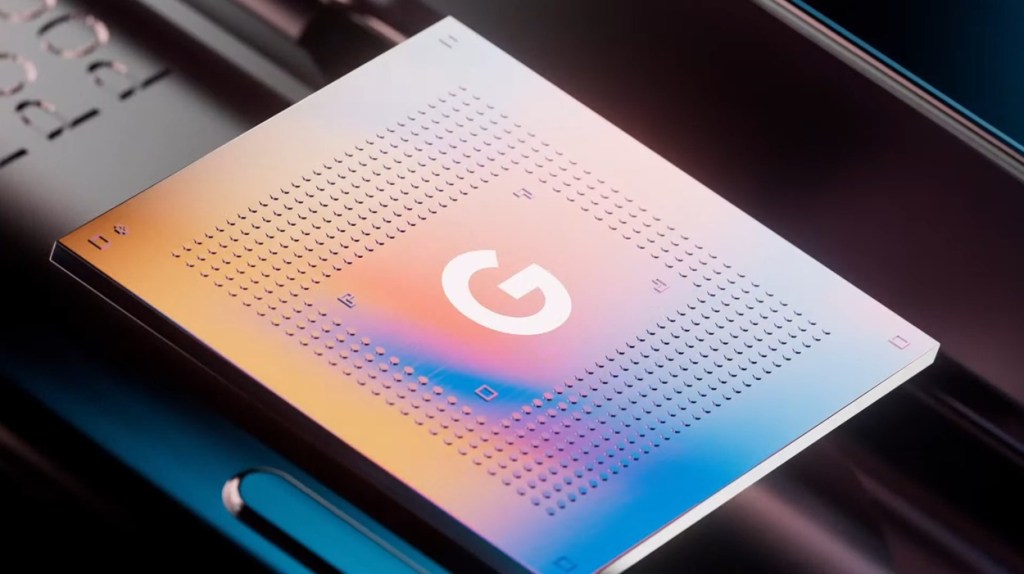
In comparison, Pixel 8 Pro’s Tensor G3 has a 1+4+4 setup consisting of 1 x Cortex-X3 core clocked at 2.91 GHz, 4 x Cortex-A715 clocked at 2.37 GHz, and 4 x Cortex-A510 clocked at 1.7 GHz. The ARM Mali-A715 GPU clocks at 890 MHz.
As for the performance gains, the Tensor G4, on paper, should offer around 10% improved performance, but Pixel’s performance numbers have always been ambiguous and heavily depend on how Google tweaks the OS or cores to perform in certain scenarios.
We’ve seen the Tensor G3 throttle in the Pixel 8 Pro to save battery and device from getting hot, and if Google hasn’t implemented a good cooling solution, we may see that again in the Pixel 9 Pro with Tensor G4. Regardless, the performance capabilities of the “new and improved” Tensor G4 don’t look promising, yet again.
Pixel 9 Pro vs Pixel 8 Pro: Cameras
The primary camera on the Pixel 8 Pro is a 50 MP f/1.7 sensor, the secondary is a 48 MP f/1.95 Ultrawide sensor, whereas the third is a 48 MP Telephoto f/2.8 sensor. The Pixel 9 Pro also has a 50 MP wide Samsung GNK camera, but the Ultrawide has been upgraded from a Sony IMX386 to a new IMX858, which is ever so slightly larger at 1/2.51″. The Telephoto is a 48 MP snapper with 5X Zoom just like last year.
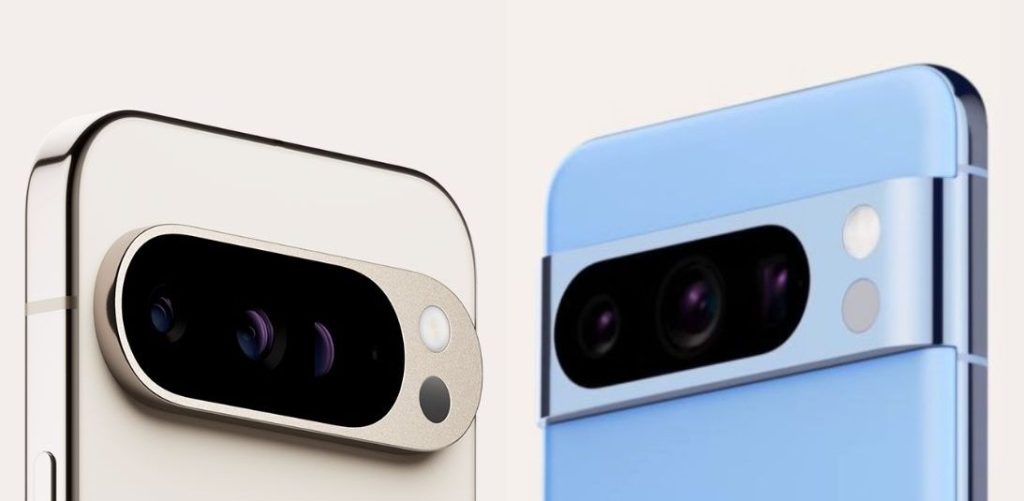
The front camera is now a 42 MP snapper, which is a long departure from the old 10.5 MP Samsung 3J1. The bottom line is, the pictures from the Pixel 9 Pro will have slightly more details and light to work with thanks to the slightly larger sensor size and resolution. You can expect the pictures from the Pixel 9 Pro to be more detailed and the cameras may perform better in low light.
Battery and Charging
The Pixel 8 Pro boasts a 5,050 mAh battery which charges at 30W, the Pixel 9 Pro features a smaller 4,700 mAh battery but more than makes up thanks to its 45W charging speed. The 9 Pro XL, the true successor to the 8 Pro, features a bigger 5,060 mAh battery.
Thanks to the lower capacity and faster charging speed, the battery should take significantly less time to charge but the Pixel 8 Pro slightly edges out Pixel 9 Pro in terms of battery life.
Connectivity and Exclusive Features
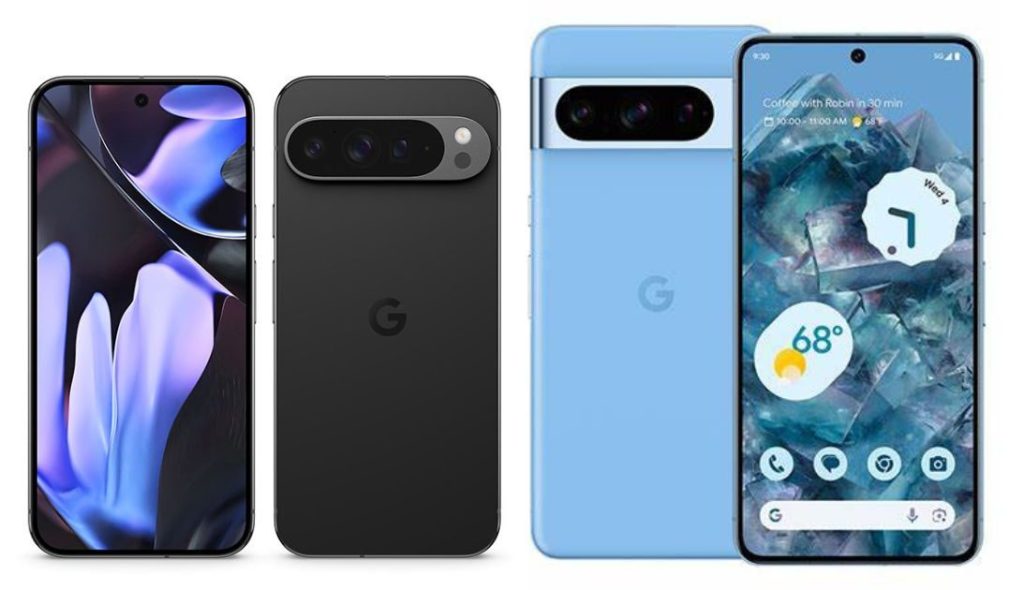
There’s Wi-Fi 6, Bluetooth 5.4, USB 3.2 Type-C, and NFC on both devices. The Pixel 9 Pro comes with Satellite Connectivity and out of the box but misses out on Android 15. Google hasn’t confirmed if older Pixels have the hardware and if they will get the upgraded connectivity. The modem on the Pixel 9 Pro is the new Exynos 5400 and should resolve the existing network issues compared to older Pixels.
As for the exclusive features, the Pixel 9 Pro will get one year of Gemini Advanced alongside new software perks like Add Me, Pixel Screenshots, and Pixel Studio, alongside a bunch of other AI shenanigans like image-to-text and Gemini Nano features. Now, Google generally rolls out new features to older Pixel devices and so far, none of the new features seem closely tied to hardware. Hence, the chances of them arriving on older Pixels later are higher. Don’t take our word for it, though.
Pixel 9 Pro vs Pixel 8 Pro: Our Verdict
Overall, for the same asking price of $999 as the Pixel 8 Pro, the Pixel 9 Pro brings pretty significant improvements in the Display, Charging, and Camera departments. Not to mention, it’s a smaller Pro this time around. However, none of them are extraordinarily significant improvements.
The Pixel 9 Pro comes with Android 14 which is the first time a new Pixel has come out without the new Android version, and since Android 15 is not far off, the 7-year update quota is technically 6 years. The cameras on the 8 Pro are still great, it has a larger display and a larger battery. Hence, unless you’re getting a good trade-in offer for your Pixel 8 Pro and want a compact Pixel, we’d suggest sticking to it.
Gemini Gems: How To Make Your Own Custom Gemini AI Chatbot
Fall Guys Mobile System Requirements (Android & IOS)
How Many Android Updates Will The Pixel 9 Series Get?

